We thank readers for comments on the previous post, thanks for the questions and respectful discussions. In this post we will tell about our experience in working with street webcams in our project Sochi. Camera, how equipment has evolved over 10 years.
Perhaps, by the way, some readers of the last post noticed that we were ddosili a little bit there. Someone had the idea to do a non-commercial resource with open access. We even laughed) We hope that there will be no more such difficulties and everyone who wishes and those who are interested will have no problems, as they say, stew on the website of Sochi.Camer.
Sochi.Kamera is a site that broadcasts streams from over 300 webcams installed in Sochi and its surroundings. The site and the entire service is non-commercial; it has been created and maintained at its own expense by the local Internet provider
, Business Communication , for almost 10 years.
The project Sochi.Kamera began April 24, 2009. It was then that the first three cameras, commissioned by the Sochi 2014 Bid Committee, went online. These were views of the beach at the Tinkoff restaurant (
now the Stargorod restaurant ), a panoramic view from
the Olimpiysky business center, a
view of the Sochi River . Now, of course, in those places are not the same cameras that were installed then, because during this time changed, according to the most conservative estimates, as many as five generations of cameras. These camera generations are conditional, it is we who themselves have identified them and conduct such chronologists. But in fact, there is equipment that is even more ancient than that which we will recall today. In general, let's take a closer look at the whole evolution, and also describe the most important camera parameters for their effective use in projects like Sochi. Cameras.
The first cameras installed were Axis211. This photo is one of the first three cameras. Now it stands in the server "Business Communication" and works, of course, in much more benign conditions than in 2009.
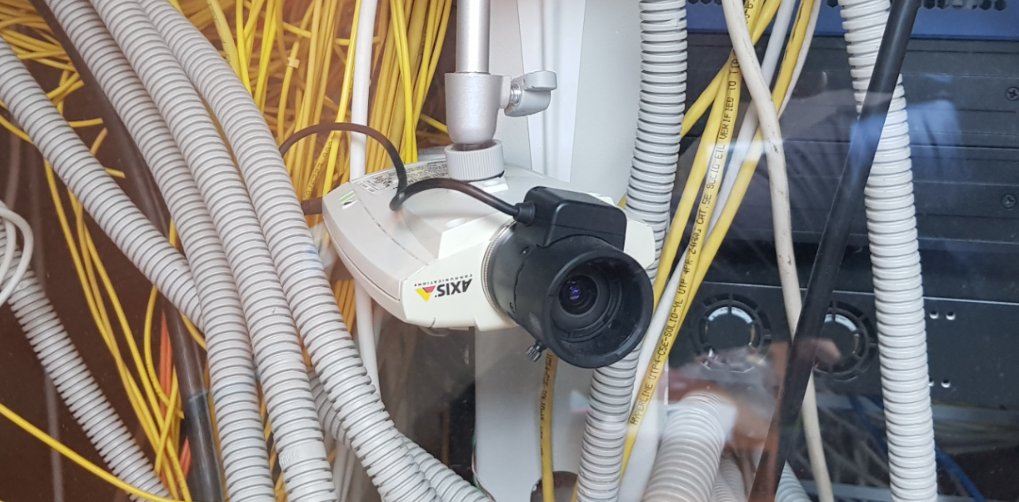
Cameras of this generation were not delivered entirely, it was necessary to buy a separate case, mount (foot), lens and the camera itself. It was necessary to independently assemble the camera so that in conditions of high humidity and increased wind load, it would work stably for years. This design, in addition to the inconvenience of self-assembly, also had many other drawbacks. For example, the camera actually had two glasses - the lens itself and the glass of the casing. Due to the unsuccessful design and the use of "manual" assembly, both glasses often fogged and gave double turbidity. Vandal resistance was low - the camera at the Tinkoff restaurant was once stolen entirely, and another time they stole the lens, replacing it with a cheaper one.
The price, too, to put it mildly, was not the dignity of the camera - 40-45 thousand rubles in 2009, which is very expensive. In general, installing and maintaining the first cameras was not easy, and the image was so-so by today's standards. Then the format MJPEG (Motion JPEG) was used - it was not even a video, but a stream of 24 jpg-images per second. For the MJPEG format, we used a simple engine called linux DVR software. With each camera went 10 MB / s, despite the fact that the picture was 640x480 pixels. Small, muddy, twitching frame with a very serious load on the network, which then was also not as powerful as it is now.
Representatives of the second generation (see photo below) were structurally little different from the first generation, they were also bought in parts and assembled on their own. Then it was already clear that you need to change the video format, and we changed the server software, switched to FFmpeg paired with nginx, began to use MPEG 4 and RTSP. We had to replace those cameras that did not support streaming video formats.
Video quality has slightly increased, and due to the format change and engine replacement, resource consumption has decreased. A significant disadvantage of using the FFMPEG library was that there was no automatic restart there. At least all our experiments in this direction ended with a file. That is, when for some reason the stream from the camera was interrupted, for example, the camera was turned off and turned on due to power supply, or just some of the packets were lost in the communication channels - broadcasting from this camera was not restored on the site, although the camera itself was available. We monitored this case, and restarted the FFMPEG process when this was detected. I remember that this happened several times a day, and in the end we were terribly tired. We even added a restart to Cron, in general this was not the case. That's about this stage and started testing Wowza.
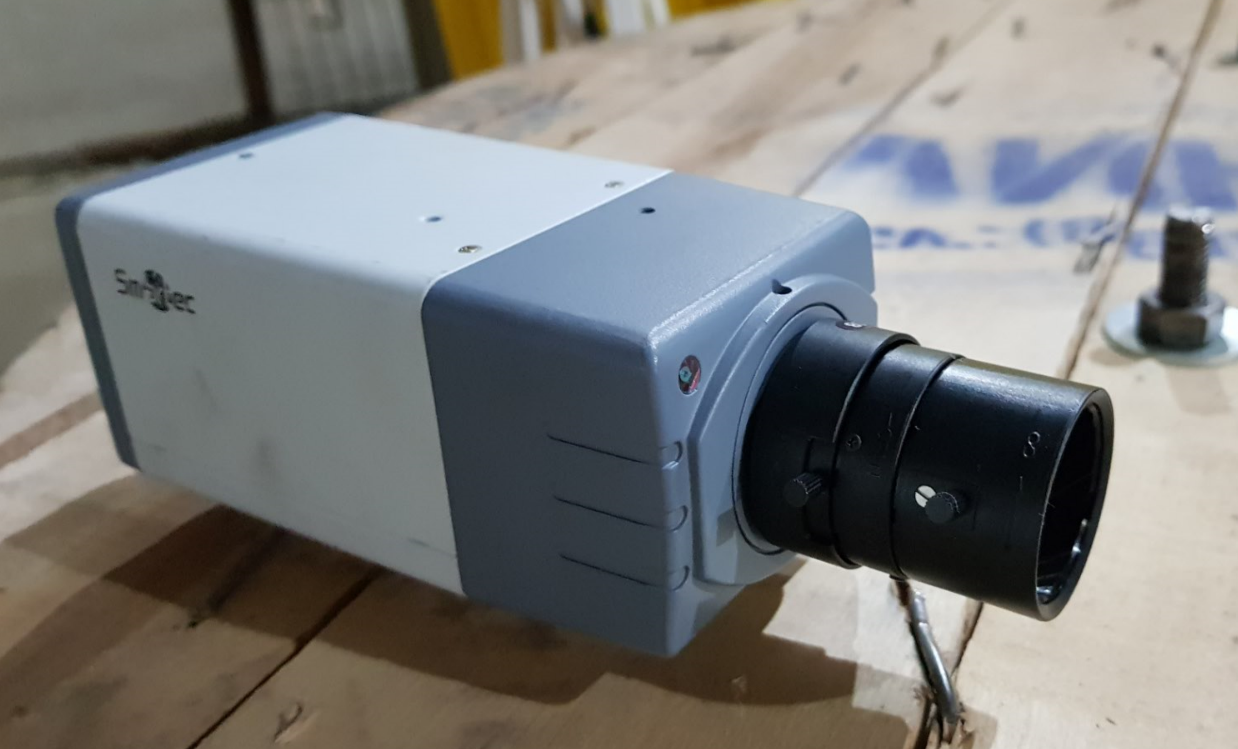 The third generation of cameras
The third generation of cameras (see photo below) made it possible to broadcast the image already in an aspect ratio of 16: 9, rather than 4: 3, and the site had to be rewritten. Then we made it entirely in ActionScript. There were no future problems with Flash, vulnerabilities, hacking and leaks, it was a very popular platform. The player has already used the format 720p, and later 1080p, began a gradual transition to a widescreen image. In addition, there was another very important circumstance that influenced the change of generation. In connection with the abolition of licensing restrictions on the market, cameras with the support of the H.264 codec appeared in large quantities. It became possible to shoot and broadcast two-megapixel video with an acceptable bitrate for broadcasting to the Internet.
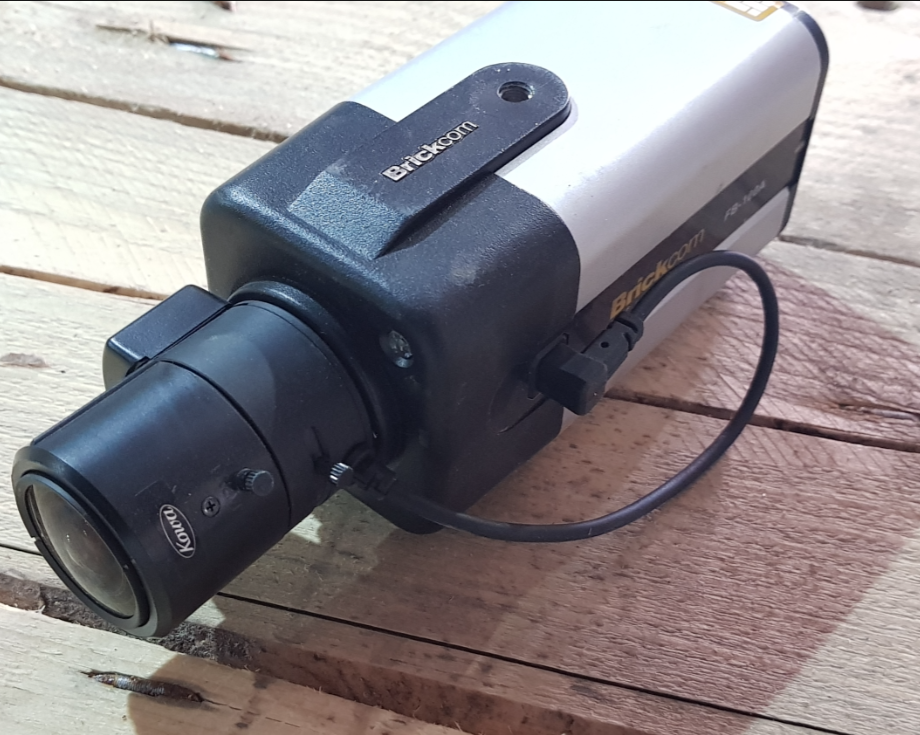 The fourth generation of cameras
The fourth generation of cameras . These cameras were sold already assembled, which, of course, greatly facilitated their installation and operation. So we began to shoot the old modular cameras and put those assembled in the factory way. Sometimes lenses were changed, if instead of default wide-angle for the desired composition of the frame, medium-focus or even tele-lenses were required.
Somewhere at the same time, due to the licensing policy of Wowza and the cancellation of a lifetime license for a product when switching from the 3rd to the 4th version of this engine, we began the first experiments with the Flussonic engine.
We have abandoned variofocal lenses on almost all cameras. The problem with them was that no matter how we set up the camera during installation, no matter how tightly the screws and retaining rings were tightened, the settings as a result of heating and cooling were confused, the picture became muddy, the corners blurred. In general, as the photographers say, the image is blurred. In fixed cameras, due to the lack of additional settings, the image is always more stable. In addition, they are cheaper, which, given the modest costs of the project, was also important.
Of course, often had to pick up and install the lens manually. We shot wide-angle lenses; Medium-focus and long-focus lenses were ordered separately and manually installed instead of the factory ones, losing, of course, all the guarantees. For example, on the camera at the
airport ), which looks at the take-off / landing, manually changed the lens, from the pre-installed 3.6mm factory to 16mm ordered on Aliexpress.
Or another interesting example with a wide-angle camera in the
aquarium ), which stands right next to the wall of the aquarium. They had to make an artificial "myopia" on the camera. We completely disassembled it, mechanically adjusted it so that it was focused on 15 cm from the lens, and then we filled the thread with superglue so that the focus did not move.
We have a lot of special cases when we have to use such tricks, but there are many well-developed typical installations, where our experience allows us to quickly install a camera and then operate it efficiently.
As for the variofocal lenses, today they remain only on PTZ PTZ cameras. Adjusting the sharpness on them is automatic, the effect of heating and cooling is compensated by electronics, and therefore everything is fine with the image.
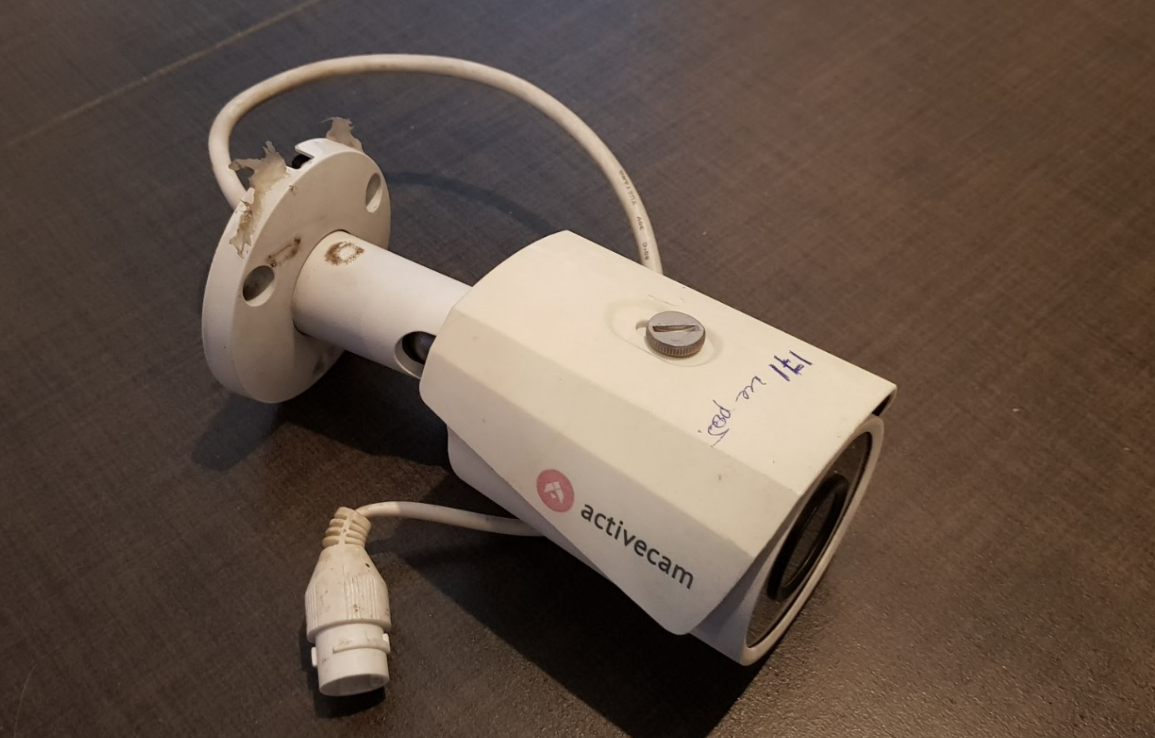
The body of these cameras has become almost perfect, the hinged wheel makes it easy to choose the right direction, the factory assembly allows you to avoid problems with the leakage of moisture in and out of the camera. However, the factory "barrel" for switching "twisted pair" is outside, and this is a significant drawback. Even being in a terminal box, it can still prevent contact oxidation. This is one of the reasons why this type of camera is being supplanted by more modern models.
By the way, the captured cameras are not discarded. They are either used in simpler conditions, like the very first camera in photo 1, or stored in a warehouse. The company "Business Communication" plans to use them to create an object of modern art - "web-chamber tree." This “tree” will be mounted when moving to a new office, the sketches are ready and cameras of every generation will have a place on it.
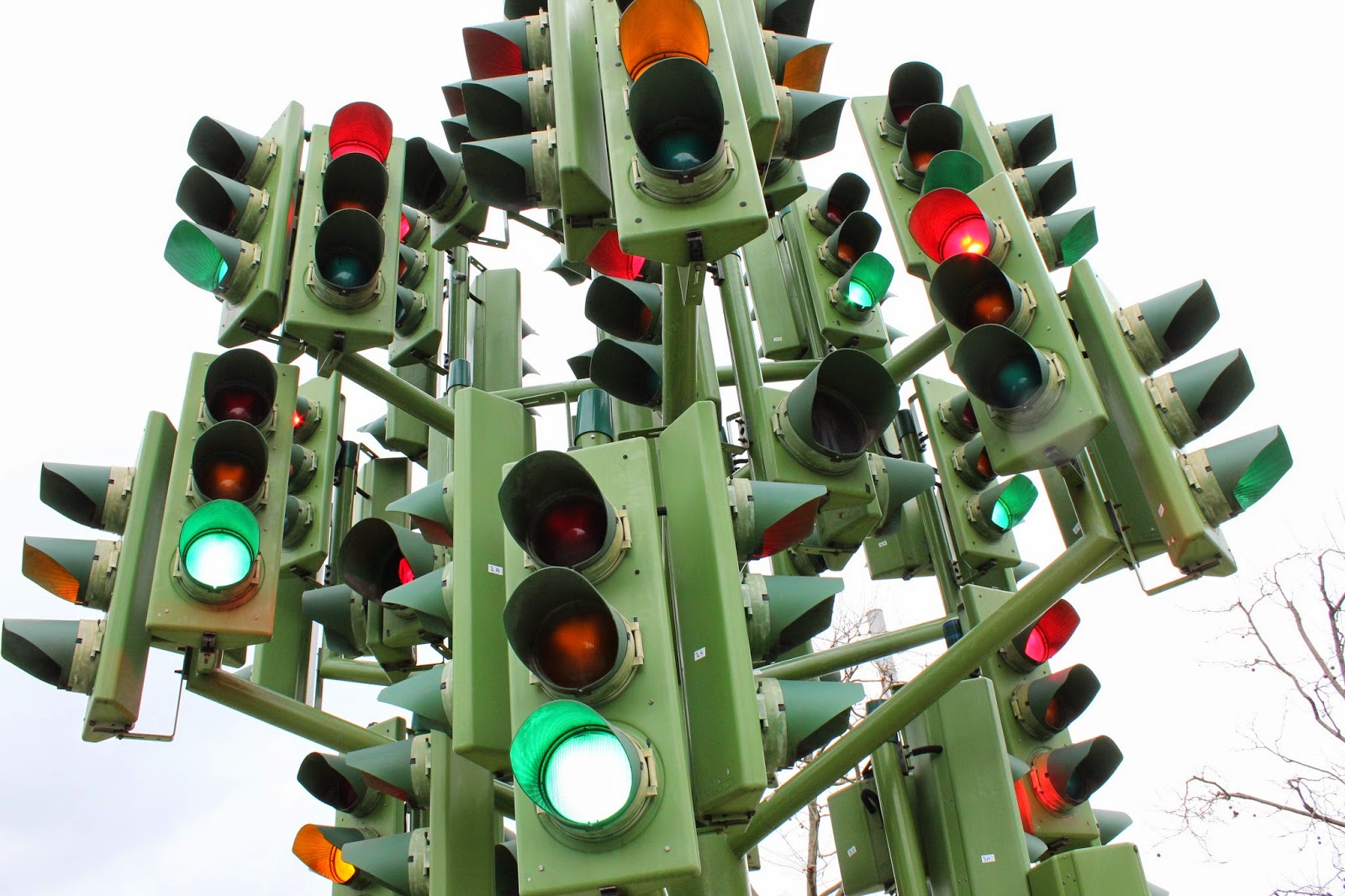 The fifth, current, camera generation
The fifth, current, camera generation is the H.265 video codec, and the AAC audio format. Bulet-case with a large convenient hinge and switching ethernet cable inside - the best that can be at the moment; completely sealed, convenient for setting and fixing

Depending on the planned installation location - the distance to the object, the required angle, the planned scene, for example, an intersection or panorama - a pre-installed lens with 3, 6, 12 or 16 mm focal length is selected.
Matrix selection is important, it should not be noisy, blurred. Much depends on the lens itself. Determining the quality of the lens and the matrix without testing is very difficult, it happens that an expensive branded camera shows dull, and the Chinese noname shows excellent. Therefore, we simply went through a lot of cameras, experimentally finding something that fits better.
Reliability and water resistance are very important. Our humidity is high, therefore, taught by experience, we use only hermetic chambers, where the connection of all wires occurs inside the case.
We try not to use models with some new "chips" if we really don't need them. For example, we do not need video analytics, local recording on a memory card, infrared illumination, we choose cameras without them. It turns out optimally: low price, about 4,000 rubles. for the camera, and very good HD quality.
Most of the fixed cameras now on the network are
Omny SNR , ActiveCam and
Hikvision . PTZ cameras are mainly Hikvision PTZ. They have convenient management and more stable patrol mode. PTZ cameras of other brands sometimes lose these settings (points, transition speed between points, time at a point) during power interruptions, and the tour has to be adjusted again.
This is our experience with webcams. We are waiting for new questions!